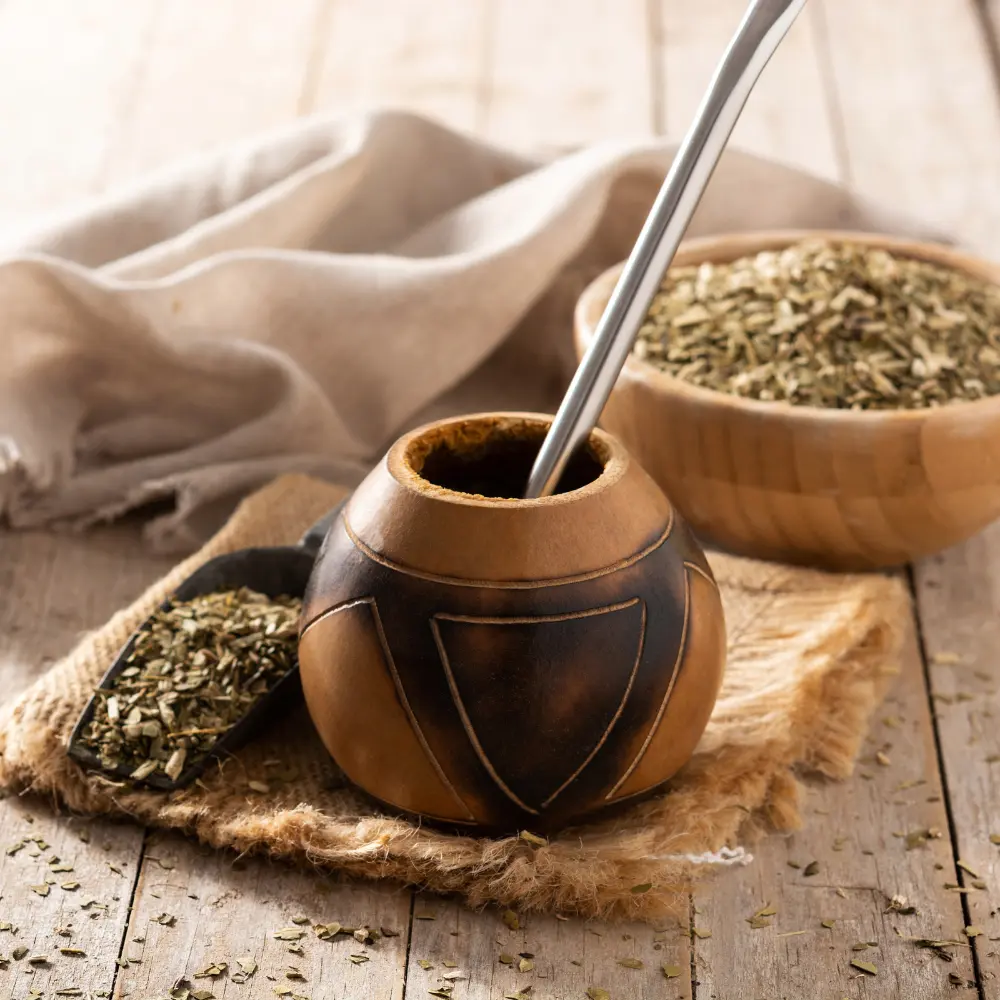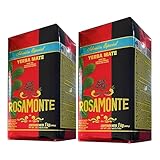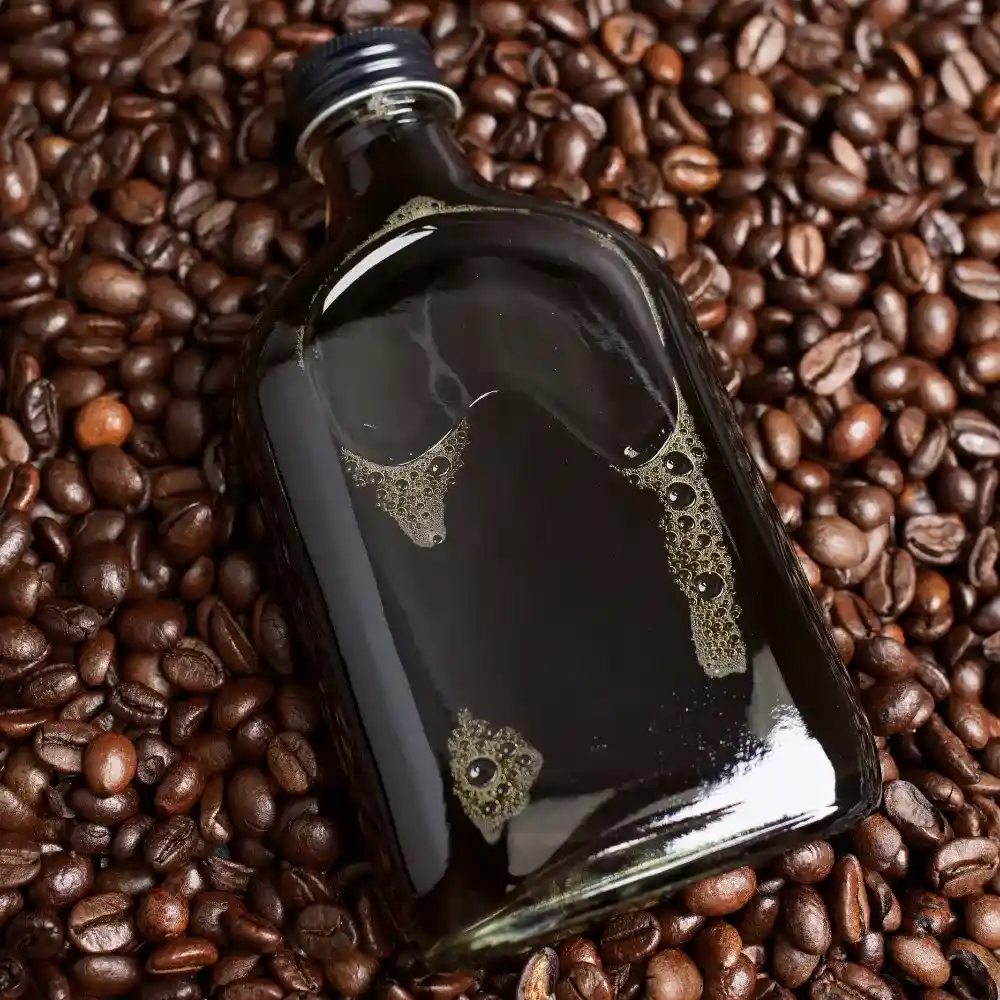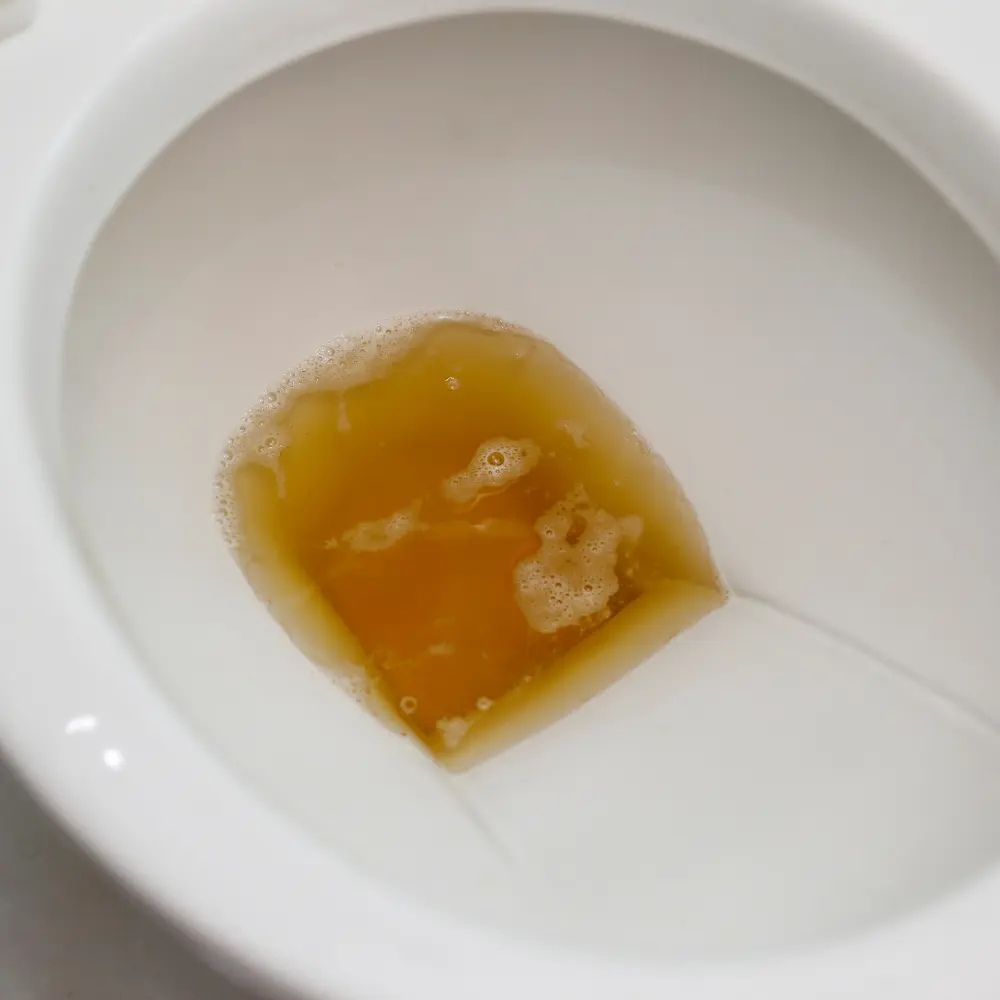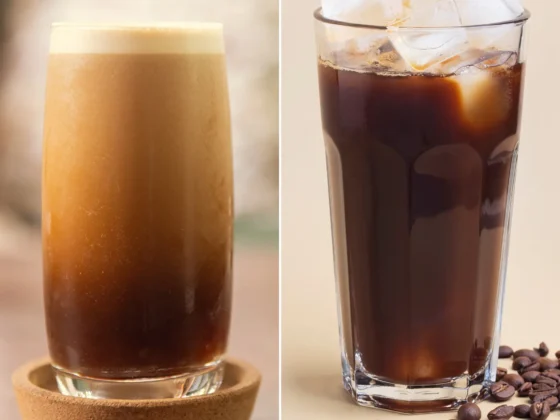In today’s fast-paced world, where energy reigns supreme, the battle of Yerba Mate vs Coffee unfolds. As we seek that invigorating boost to power through our day, coffee stands tall as the favored companion, a cherished morning ritual for countless individuals worldwide. However, amidst this caffeinated landscape, a formidable contender emerges – yerba mate. Hailing from the depths of South America, this traditional brew has captivated hearts and minds, gaining momentum on the global stage as a compelling and superior alternative to coffee.
As more and more people are becoming aware of their health and lifestyle choices, it’s vital to understand what we’re putting into our bodies. This is particularly true when it comes to our daily stimulants. With that in mind, we’ve put together this comprehensive guide comparing yerba mate and coffee. We’ll delve deep into their histories, their chemical compositions, and their unique health benefits and potential side effects.
One of the most frequently asked questions when it comes to yerba mate vs coffee is about their caffeine content. After all, it’s the invigorating boost that draws most of us to these drinks in the first place. In this guide, we will present a detailed comparison of the caffeine in yerba mate vs coffee. We’ll also discuss the different ways these two beverages can energize your day, and help you make an informed decision about which might be the better choice for you.
So, whether you’re a dedicated coffee aficionado, a mate enthusiast, or just someone curious about these two beverages, we’ve got you covered. Let’s dive in!
Yerba Mate and Coffee: Key Takeaway
- Caffeine Content and Energy Boost: Coffee generally contains higher caffeine content and provides a more immediate, intense energy boost. In contrast, mate offers a gentler, sustained energy lift, with its combination of caffeine, theobromine, and theophylline.
- Health Benefits: Both beverages are rich in antioxidants, which have numerous potential health benefits. mate’s unique blend of xanthines, polyphenols, and micronutrients offers a range of health advantages, while coffee’s antioxidants may reduce the risk of many diseases, including certain types of cancer and neurological conditions.
- Taste, Preparation, and Cultural Practices: The preparation and consumption of Yerba Mate and coffee are deeply embedded in their respective cultures. Mate is traditionally consumed in a communal setting using a gourd and bombilla, whereas coffee preparation methods vary globally.
- Lifestyle Considerations: Choosing between these two beverages can depend on personal lifestyle preferences. The social and ritualistic aspects of mate consumption may appeal to some, while others may prefer the quick and robust energy kick provided by coffee.
- Ethical Considerations: It’s important to consider ethical aspects like sustainability and fair trade when choosing between Yerba Mate and coffee. Conscious consumer choices can contribute to the well-being of the communities that cultivate these crops and the preservation of our environment.
Yerba Mate vs Coffee: A Tale of Two Beverages
In the world of invigorating beverages, both drinks have rich histories. Originating from different continents, these beverages have become deeply embedded in the cultures from which they sprung. Let’s take an in-depth look at the journey of each of these caffeinated drinks.
The Origins of Yerba Mate

Yerba mate, derived from the holly genus Ilex paraguariensis, is indigenous to South America. Its use can be traced back to the Guarani and some Tupí communities, inhabiting what is now present-day Paraguay. This plant was primarily grown and consumed in the departments of Amambay and Alto Paraná, until its commercial potential was discovered by the Jesuits. This led to its widespread use throughout the Spanish colonies. (1)
Known as ‘ka’a’ in the Guarani language, which means ‘herb,’ yerba mate’s leaves are steeped in hot water to make a beverage also called mate. The plant and beverage also go by various other names depending on the region, including ‘erva-mate,’ ‘chimarrão,’ ‘tereré,’ and ‘chá mate.’
Traditionally consumed in the central and southern regions of South America, this beverage has found its way into global markets. It is popular in Paraguay, Argentina, Uruguay, Southern Brazil, the Gran Chaco of Bolivia, and southern Chile. Its popularity has spread to the Levant, particularly Syria, and Lebanon, due to 19th-century Syrian immigrants to Argentina. Today, this plant is a common ingredient in energy drinks and is sold globally as bottled or canned iced tea.
The Birth of Coffee Culture
In contrast to mate, coffee finds its origins in the ancient coffee forests nestled upon the Ethiopian plateau. Steeped in folklore, the tale tells of a goat herder named Kaldi, whose watchful eye observed a fascinating phenomenon. His goats, after nibbling on the berries of a particular tree, exhibited an unprecedented surge of energy, captivating his attention. It was through this serendipitous encounter that the coffee plant, with all its aromatic wonders, revealed itself to the world. (2)
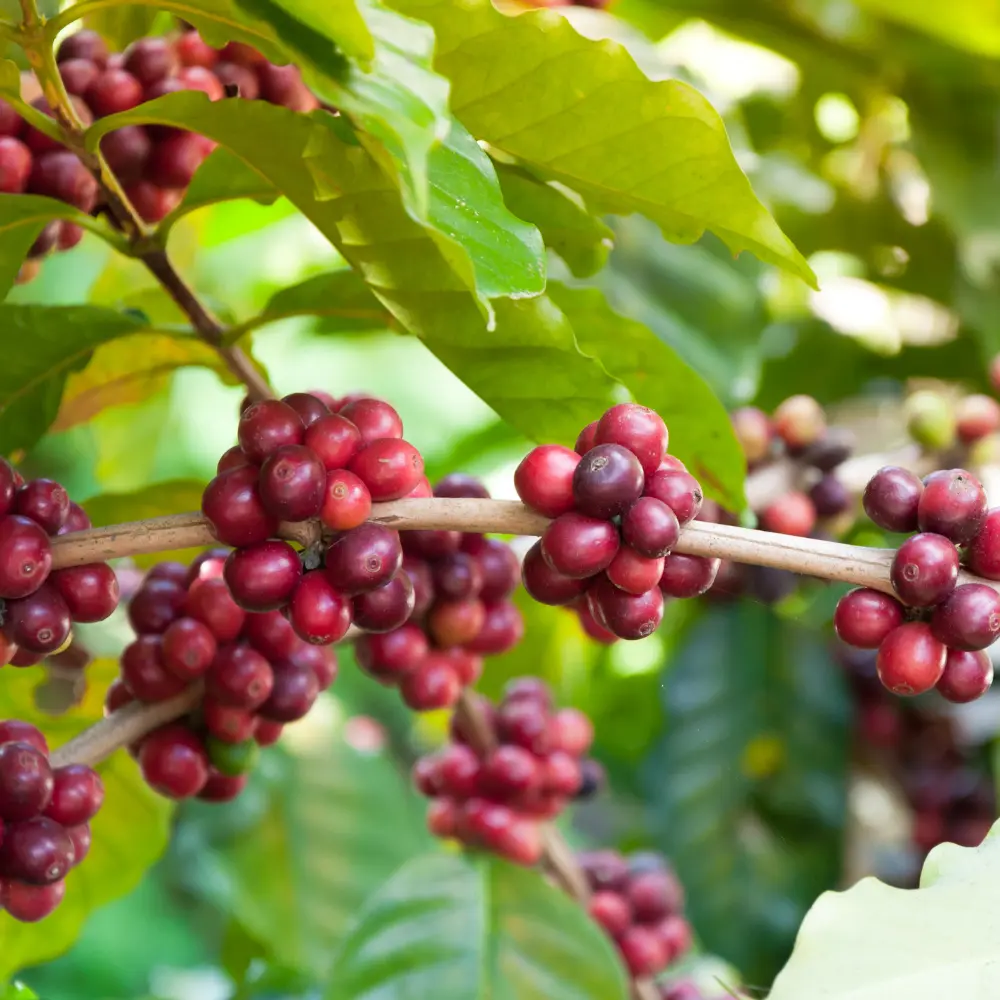
By the 15th century, coffee cultivation had spread to the Yemeni district of Arabia, and by the 16th century, it had reached Egypt, Persia, Turkey, and Syria. Public coffee houses, known as “qahveh khaneh,” quickly became the cornerstone of societal interactions.
Europe discovered coffee in the 17th century, and it was quickly embraced across the continent. Coffee houses began to pop up in major cities, serving as centers for intellectual exchange. By the 18th century, coffee had found its way to the New World, where it continues to hold a prominent place in society.
Yerba Mate and Coffee Today
Today, both drinks have crossed borders and become beloved beverages worldwide. Although coffee has retained broader popularity, especially in North America and Europe, mate’s recognition is steadily growing. Its distinctive flavor profile, potential health benefits, and status as a cleaner stimulant have boosted its popularity in health and wellness circles.

Meanwhile, coffee culture has embedded itself deeply within societal structures. The emergence of specialty coffee shops, advancements in home brewing techniques, and the rise of artisanal coffee roasting are a testament to the deep-rooted influence of coffee in our lives.
Despite their different origins and cultures, both drinks serve a similar purpose – they are more than just beverages. They symbolize hospitality, foster social interaction, and provide comfort in our fast-paced lives. Be it the communal experience of sharing a gourd of mate or the quiet solitude of a morning coffee ritual, these beverages offer more than a caffeine boost – they provide a timeless connection to diverse cultures and traditions across the globe.
The Chemistry of Energy: Yerba Mate vs Coffee
Yerba Mate and coffee, both popular for their invigorating effects, owe these properties to their rich array of chemical constituents. Their compositions, including caffeine and several other compounds, make them potent sources of energy and contribute to various health benefits.
Caffeine Content Comparison
One of the primary factors dictating the energy-boosting capacity of these two drinks is their caffeine content. Caffeine is a xanthine, a class of compounds known for their psychoactive effects. This stimulant improves focus, alertness, and even physical performance, making these beverages daily staples for many.
Mate contains caffeine content varying between 0.7% and 1.7% of dry weight. This percentage may seem relatively small, but it is significant considering the small amount used to brew a cup. Comparatively, coffee, notorious for being one of the richest sources of caffeine, holds up to 3.2% caffeine in ground coffee. The exact caffeine content can vary depending on factors such as the type of coffee bean, how strongly it’s brewed, and the specific method of preparation.
In terms of the caffeine concentration per cup, coffee typically contains more. A standard cup of coffee can contain around 95 mg of caffeine, while a cup of mate might contain approximately 30 to 80 mg. This distinction makes coffee a stronger stimulant in general but also means it could lead to overstimulation or discomfort in some individuals sensitive to caffeine.
Health Benefits and Side Effects: Yerba Mate and Coffee
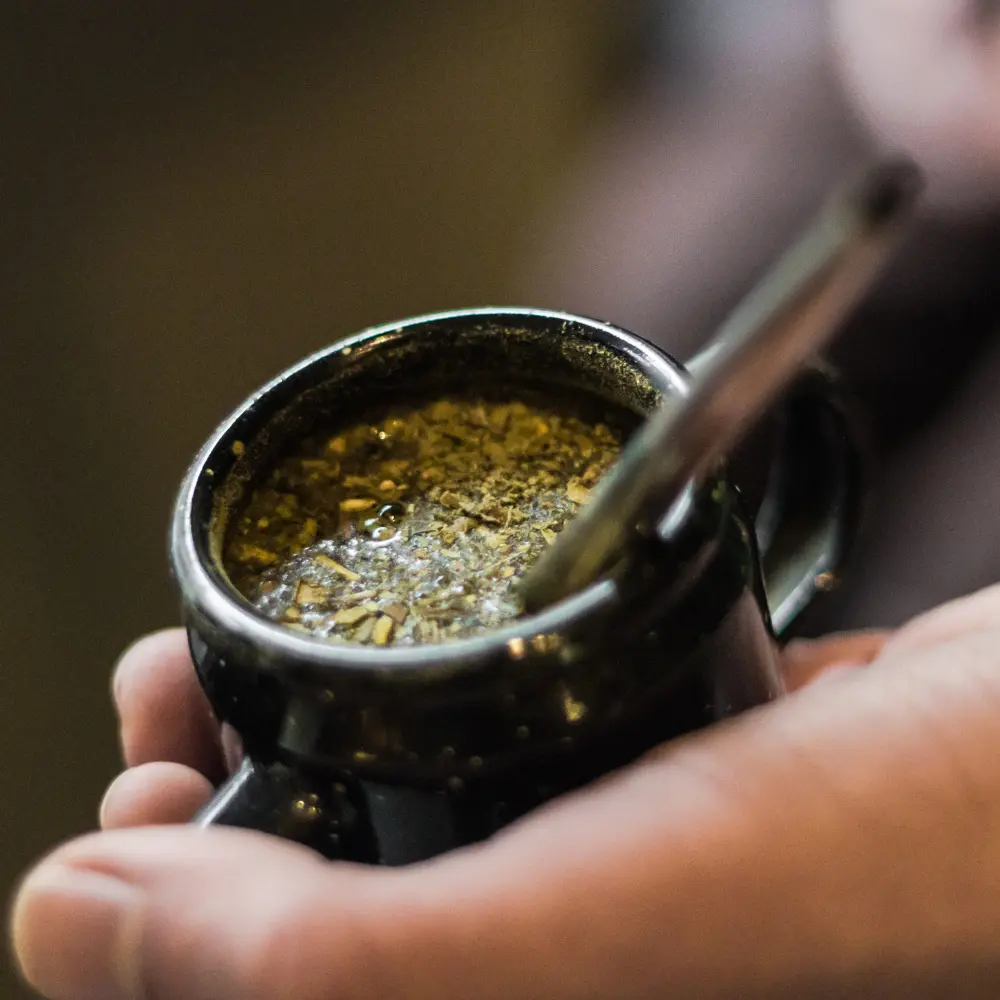
In the realm of popular hot beverages, mate and Coffee both claim a devoted following. A deep dive into the health benefits and potential side effects of these beverages showcases a rich array of antioxidants, potential risks, and a fascinating blend of holistic health perspectives. This comparison provides a comprehensive understanding of the potential health implications linked to the consumption of these drinks.
Nutritional Values
Both beverages are cherished not only for their taste and invigorating effects but also for their intriguing nutritional profiles. The components of these drinks can influence several health aspects, from mental alertness to inflammation control and disease risk.
Yerba Mate
- Xanthines: Mate is rich in xanthines, including caffeine and theobromine. These compounds behave as stimulants, enhancing alertness and potentially improving cognitive performance.
- Caffeoyl derivatives: These compounds serve as primary antioxidants in mate, protecting the body from damage by harmful molecules called free radicals. This category of antioxidants may be beneficial for heart health and disease prevention.
- Saponins: Mate contains these bitter compounds that are known for their anti-inflammatory and cholesterol-lowering properties. By reducing inflammation and cholesterol, saponins could potentially help in preventing chronic diseases like heart disease.
- Polyphenols: Mate is packed with these antioxidants, which are tied to a reduced risk of many diseases, including heart disease, cancer, and type 2 diabetes. They may also contribute to gut health, owing to their prebiotic properties.
In addition to these compounds, this beverage also contains a variety of micronutrients:
- Vitamins: It is a source of vitamin C, which is vital for immune function and skin health. It also provides B vitamins such as thiamine, riboflavin, and vitamin B6, essential for energy production and brain function.
- Minerals: It offers small quantities of several minerals, including potassium, which helps regulate blood pressure; calcium, necessary for bone health; and magnesium, crucial for nerve and muscle function. It also contains traces of phosphorus, manganese, and iron. Despite their presence, the quantities are relatively small and not enough to significantly contribute to daily dietary requirements.
Coffee
Coffee’s nutritional profile primarily revolves around its rich content of bioactive compounds:
- Caffeine: As the most widely consumed psychoactive substance globally, caffeine is the primary reason people turn to coffee. It boosts energy, improves focus, and can even enhance physical performance.
- Theobromine: Found alongside caffeine, this stimulant is primarily known as the “chocolate compound” due to its high concentration in cocoa. It has a milder stimulant effect than caffeine and is known to promote heart health.
- Antioxidants: Coffee is rich in antioxidants, including chlorogenic acids and melanoidins. These compounds may help reduce inflammation, protect against chronic diseases like diabetes and cancer, and even support brain health. They are believed to contribute to the health benefits associated with coffee consumption.
- Micronutrients: Coffee contributes small amounts of several vitamins and minerals to your diet, including B vitamins, manganese, potassium, and magnesium. While the quantities are not large, regular coffee drinkers can still reap some nutritional benefits from their daily cup.
While these nutritional profiles illustrate why these two beverages are known for more than their taste, it’s essential to consider them as part of a balanced diet. The health benefits they offer are most effective when accompanied by a nutrient-rich diet and healthy lifestyle habits.
Potential Health Risks and Side Effects

While both beverages can provide health benefits, they also come with potential risks and side effects:
Yerba Mate
- Long-term, high-volume consumption of mate may increase the risk of upper respiratory and digestive tract cancers, likely due to the presence of polycyclic aromatic hydrocarbons (PAHs), known carcinogens also found in tobacco smoke and grilled meat.
- Consuming this beverage at very high temperatures could potentially damage the lining of the respiratory and digestive tracts, enhancing the risk of cancer.
- Due to its caffeine content, overconsumption of this drink could lead to caffeine-related side effects like headaches, migraines, and high blood pressure.
- Pregnant individuals are advised to limit their intake due to a potential increased risk of miscarriage and preterm birth linked to high caffeine levels.
- Certain compounds in mate may interact with Monoamine oxidase inhibitors (MAOIs), medications often prescribed for depression and Parkinson’s disease. Moreover, its caffeine content may interact with certain medications like muscle relaxant Zanaflex or antidepressant Luvox.
Coffee
- Similar to mate, overconsumption of coffee can lead to caffeine-related side effects, including insomnia, digestive problems, rapid heart rate, and muscle breakdown.
- Pregnant individuals should limit coffee intake to prevent potential adverse effects.
Holistic Health Perspectives

From a holistic health viewpoint, both beverages offer potential advantages:
Yerba Mate
- Mate may enhance mental focus and energy levels due to its caffeine content, potentially improving alertness, attention, and reaction time.
- Some research indicates that this drink could enhance physical performance by improving muscle contractions and reducing fatigue.
- Its antioxidant compounds may aid in preventing infections from bacteria, parasites, and fungi, though more research is needed to confirm these benefits in humans.
- It could potentially assist in weight management and blood sugar control, thus playing a beneficial role in managing diabetes and obesity.
Coffee
- As with Mate, coffee is known to enhance mental focus and energy levels, attributed to its caffeine content.
- Some research suggests that coffee consumption may lower the risk of several types of cancer, stroke, and diseases such as Parkinson’s and Alzheimer’s.
- Coffee may help in boosting metabolic rate, aiding in weight loss, though the effect is likely to be small and temporary.
Despite their potential benefits, it’s vital to remember that these beverages should be consumed as part of a balanced diet and not as a replacement for a varied, nutrient-dense eating pattern. Moreover, their potential side effects warrant mindful and moderate consumption.
Taste, Preparation, and Culture
The experience of consuming these two beverages isn’t solely about the stimulating effects or the health benefits they offer. It is also about the unique taste profiles, traditional preparation methods, and cultural significance they hold in various societies.
The Unique Taste Profiles of Yerba Mate and Coffee

Both drinks offer distinct flavor experiences that are enjoyable and intriguing. Brewed mate presents a taste akin to an infusion of vegetables, herbs, and grass, with a semblance to certain types of green tea. Depending on the steeping process, its flavor can range from pleasantly bitter to mildly sweet. Different blends of mate are also available, where the mate leaves are combined with other herbs like peppermint or citrus rinds for a different taste experience.
Coffee, on the other hand, is characterized by its robust and complex flavor profile. Depending on the type of bean, roast level, and preparation method, the taste can range from sweet and fruity to dark and bitter. Overtones of chocolate, caramel, berries, and spices are common, making each cup of coffee a unique flavor journey.
Traditional Preparation Methods
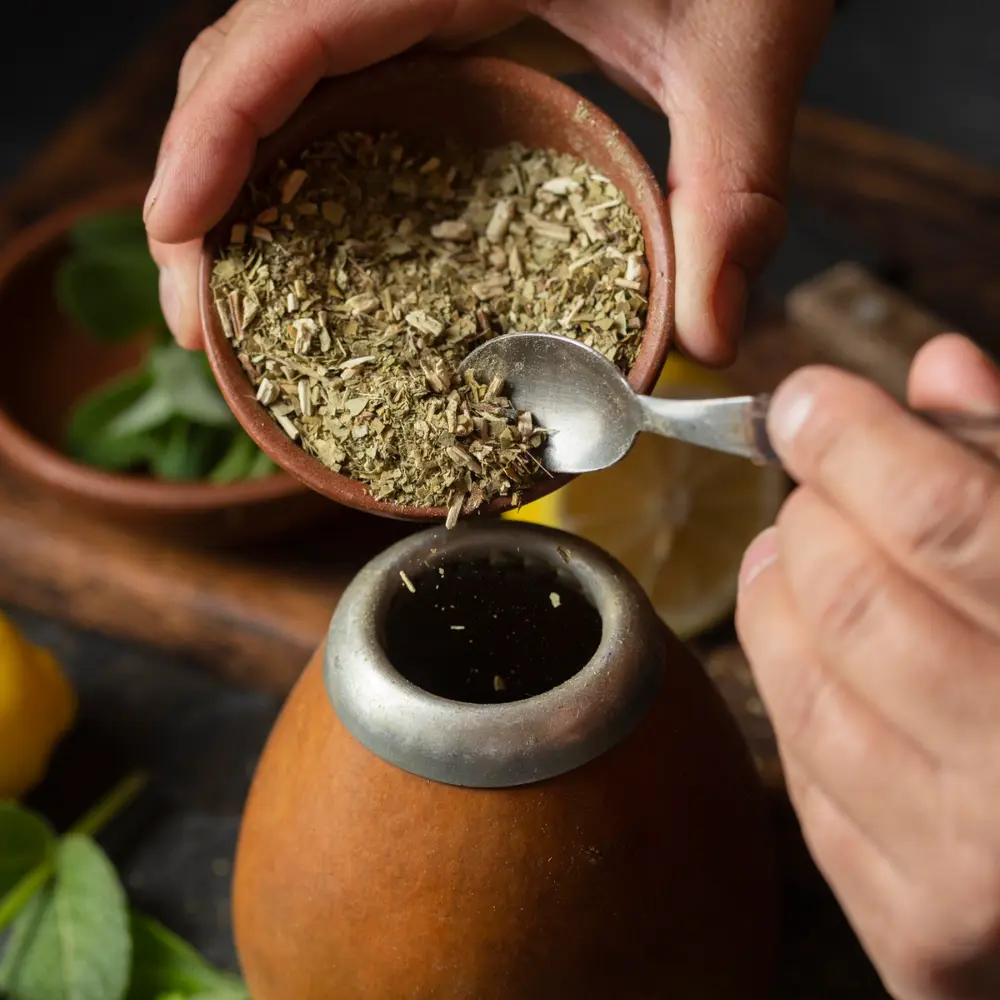
Both drinks have specific traditional preparation methods that enhance their unique flavors and play a significant role in their cultural significance.
Mate is traditionally prepared by filling a hollowed-out gourd up to three-quarters full with dry Yerba Mate leaves (and sometimes twigs), then topping it off with water at a temperature of 70–80 °C (158–176 °F)—hot but not boiling. This traditional gourd, known as a guampa, porongo, or mate, is often passed around in a group setting, with each person drinking from the same metal or wooden straw (a bombilla or bomba). The infusion can also be prepared with cold water, a variation known as tereré.
The preparation of coffee varies widely around the world. In traditional espresso preparation, finely ground coffee is compacted into a ‘puck’ and hot water is forced through at high pressure. Turkish coffee involves finely ground coffee beans simmered in a Turkish coffee pot (cezve), where sugar is added during the brewing process, not after. The French press or plunger pot is another popular method where coarse ground coffee is steeped and then separated from the water with a mesh plunger.
Cultural Significance and Rituals

Both Yerba Mate and coffee hold prominent places in different cultures, often being centerpieces for socialization and community rituals.
Drinking Yerba Mate is a communal practice in countries like Paraguay, Uruguay, Argentina, and Southern Brazil, regardless of age. The ritual of sharing Yerba Mate from a single gourd in a group symbolizes friendship and bonds within the community. In these regions, people often gather to drink mate in the same way others would meet for tea or coffee. In warmer weather, the hot water in Yerba Mate is sometimes replaced with lemonade, offering a refreshing variant.
Coffee also plays a pivotal role in social rituals worldwide. In many cultures, offering coffee to guests is a sign of hospitality. For instance, in Ethiopia, where coffee originated, a traditional coffee ceremony is a cherished part of the community’s social life. In many Western societies, coffee breaks serve as casual social gatherings at the workplace. And in places like Italy, enjoying an espresso at a local café is an integral part of the daily routine.
From their unique tastes and preparation methods to their cultural importance, both Yerba Mate and coffee provide more than just an energy boost—they offer rich experiences steeped in history and tradition.
Making the Choice: Yerba Mate or Coffee?
The decision between Yerba Mate and coffee can be complex, with factors such as lifestyle, energy needs, personal preferences, and ethical considerations coming into play. However, when considering Yerba Mate vs Coffee, it’s worth noting that both can be enjoyed for their unique qualities and benefits.
How to Choose Based on Lifestyle
Your lifestyle can greatly influence your choice between Yerba Mate and coffee. For those who value rituals and community connections, Yerba Mate might be the better choice. Its traditional method of consumption promotes sharing and bonding, making it a perfect drink for social gatherings or family functions.

On the other hand, if you’re a busy individual constantly on the go, coffee might be more suitable. Coffee shops are ubiquitous in urban settings, making it easy for you to grab a cup of coffee anytime. Moreover, the quick preparation time of coffee aligns well with a fast-paced lifestyle.
Energy Needs and Personal Preferences
When it comes to energy needs, both Yerba Mate and coffee serve as excellent sources of stimulation, courtesy of their caffeine content. Your personal preference may come into play in deciding between the two. If you need a quick, intense pick-me-up, the higher caffeine concentration in coffee could be beneficial. But if you’re looking for a more prolonged, gentle stimulation without the jitters often associated with excessive coffee consumption, Yerba Mate may be the way to go.

Flavor preferences also matter. If you enjoy a robust, aromatic beverage with potential variations in flavor due to different beans and roasting levels, coffee could be your drink of choice. Conversely, if you prefer a herbal, grassy flavor reminiscent of some varieties of green tea, you may want to opt for Yerba Mate.
Ethical Considerations: Sustainability and Fair Trade
The ethical implications of your choice between Yerba Mate and coffee can’t be ignored. It’s important to consider the sourcing practices and environmental impact of the production of these beverages.
Both Yerba Mate and coffee have industries where sustainable farming practices are emphasized, protecting the environment and supporting the livelihoods of farmers. Look for Fair Trade Certified products, which ensure that farmers and workers are paid fair prices and work in safe conditions. Additionally, Rainforest Alliance Certified or organic coffee and Yerba Mate can assure you that sustainable farming practices were used, protecting wildlife and forests.
The choice between Yerba Mate and coffee isn’t a binary one. Each has its own unique benefits and cultural significance. You might find that different circumstances call for different beverages. In the end, it’s all about finding the right balance that works for you.
Conclusion
The journey into the world of Yerba Mate and coffee is both exciting and enlightening. Each offers a unique blend of culture, taste, and energy, with their own distinct profiles of beneficial compounds. Understanding the caffeine in Yerba Mate vs coffee, as well as their broader nutritional profiles, helps us appreciate not just the energizing powers of these beverages but also their potential health benefits.
Yerba Mate, with its unique blend of xanthines, polyphenols, and micronutrients, presents a more gentle, sustained energy boost, coupled with a host of health benefits from its antioxidant properties. Coffee, on the other hand, known for its rich flavor and higher caffeine content, provides a quicker, intense energy kick and its own range of health advantages from its myriad of antioxidants.
Whether you choose to sip on a cup of Yerba Mate with friends, following the traditional rituals of South America, or grab a quick coffee to kickstart your day, your decision goes beyond just a caffeine fix. It becomes an experience intertwining culture, personal preference, health considerations, and, of course, the simple pleasure of enjoying a flavorful drink.
This comprehensive guide serves as a stepping stone into the intriguing world of Yerba Mate and coffee, providing insight into their differences and similarities. It enables you to make an informed decision based on your lifestyle, energy needs, taste preferences, and ethical considerations. Whether you’re team Yerba Mate, team coffee, or enjoy both, there’s no denying the appeal of these energizing beverages and their profound roles in our everyday lives.
FAQ
How does the caffeine content of coffee compare to yerba mate?
Generally, coffee has a higher caffeine content than yerba mate, leading to a more immediate and intense energy boost.
Can drinking yerba mate or coffee have long-term health effects?
Yes, both yerba mate and coffee, when consumed in moderate amounts, can contribute positively to long-term health due to their high antioxidant content; however, excessive consumption could lead to potential negative effects like insomnia or cardiovascular issues.
What are the cultural significances of yerba mate and coffee?
Yerba mate is a symbol of hospitality and social gathering in South American cultures, while coffee holds a universal appeal, playing a central role in social interactions across many cultures worldwide.
How can I decide whether yerba mate or coffee is a better choice for me?
Your choice between yerba mate and coffee should depend on your lifestyle, personal taste preferences, energy needs, and any ethical considerations like sustainability and fair trade.
